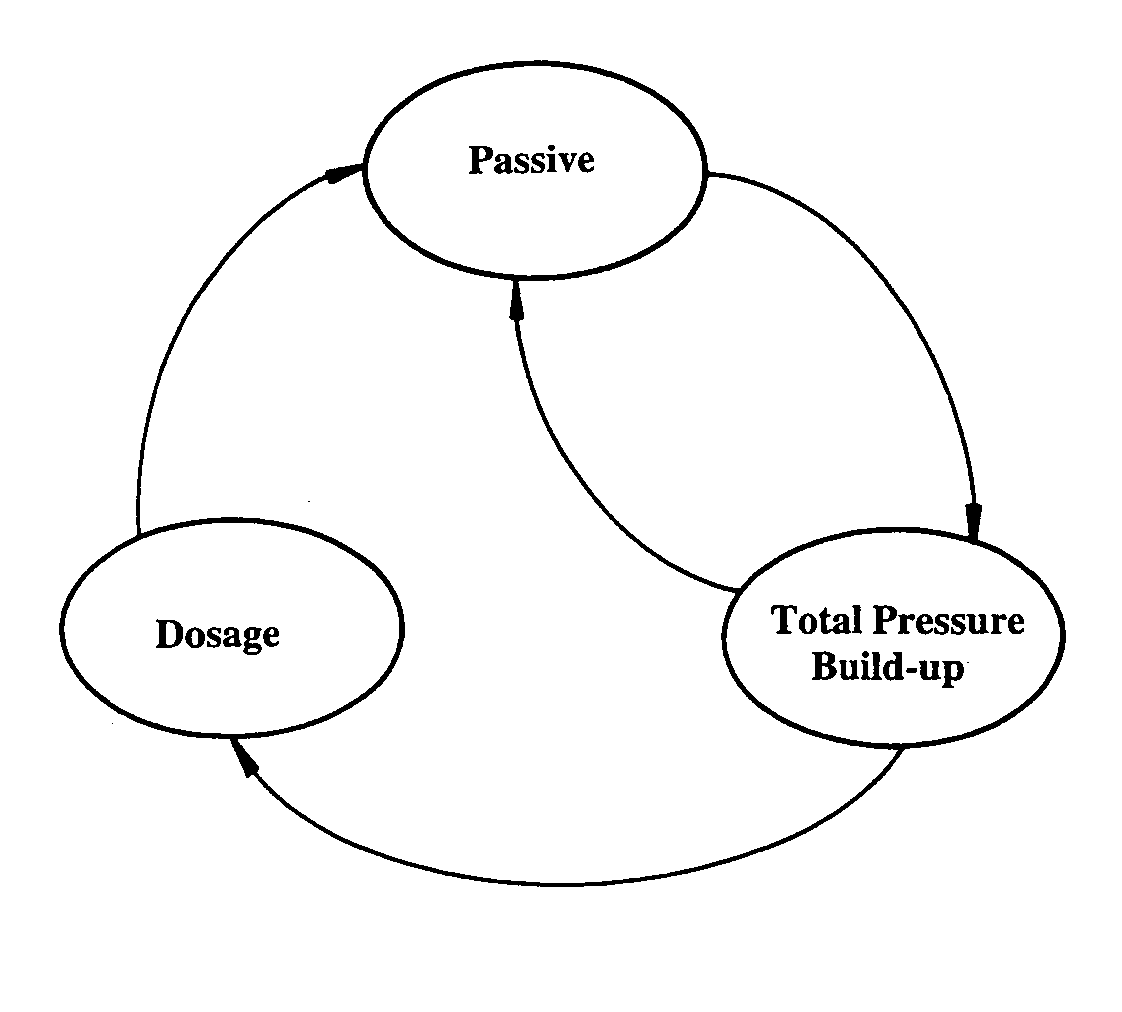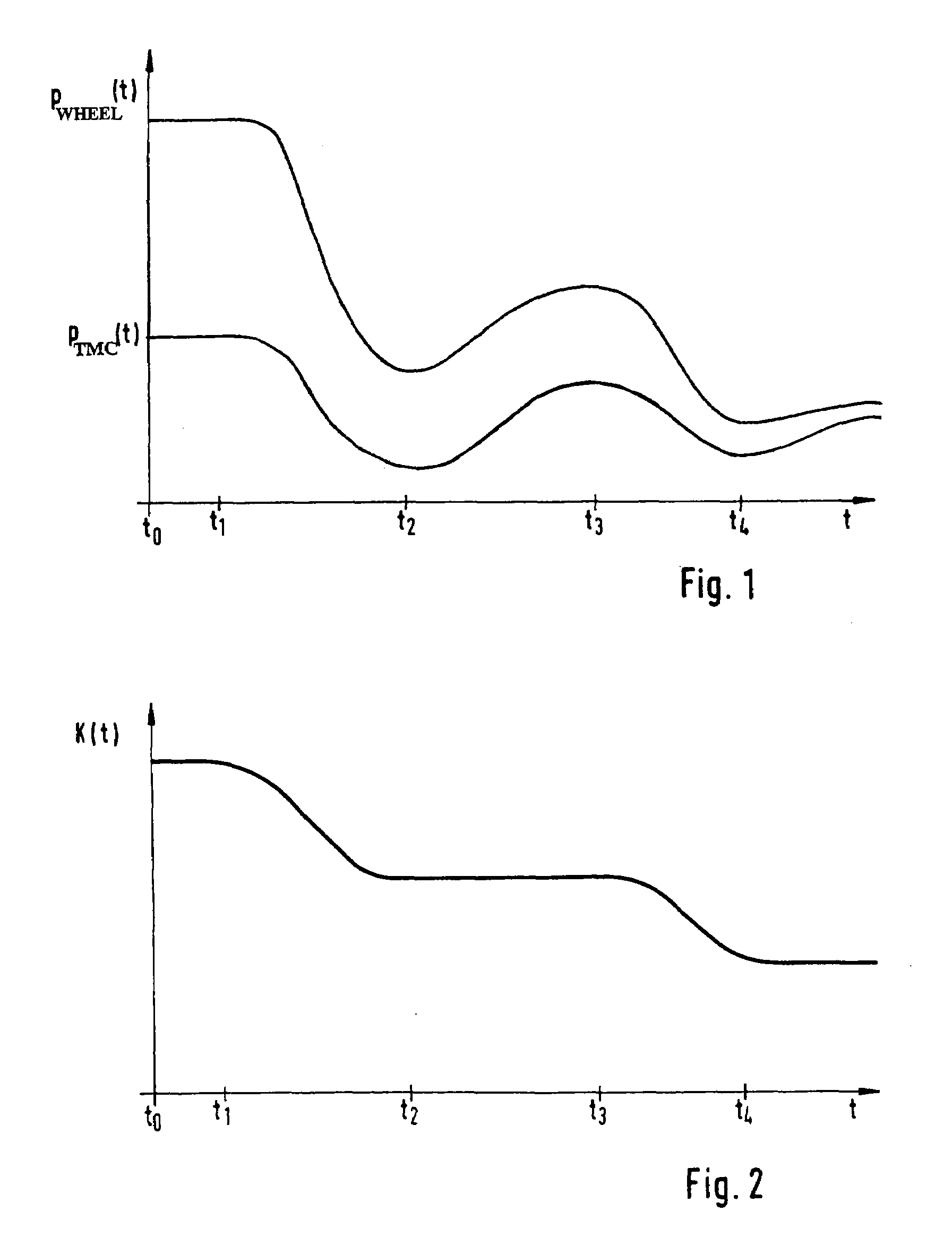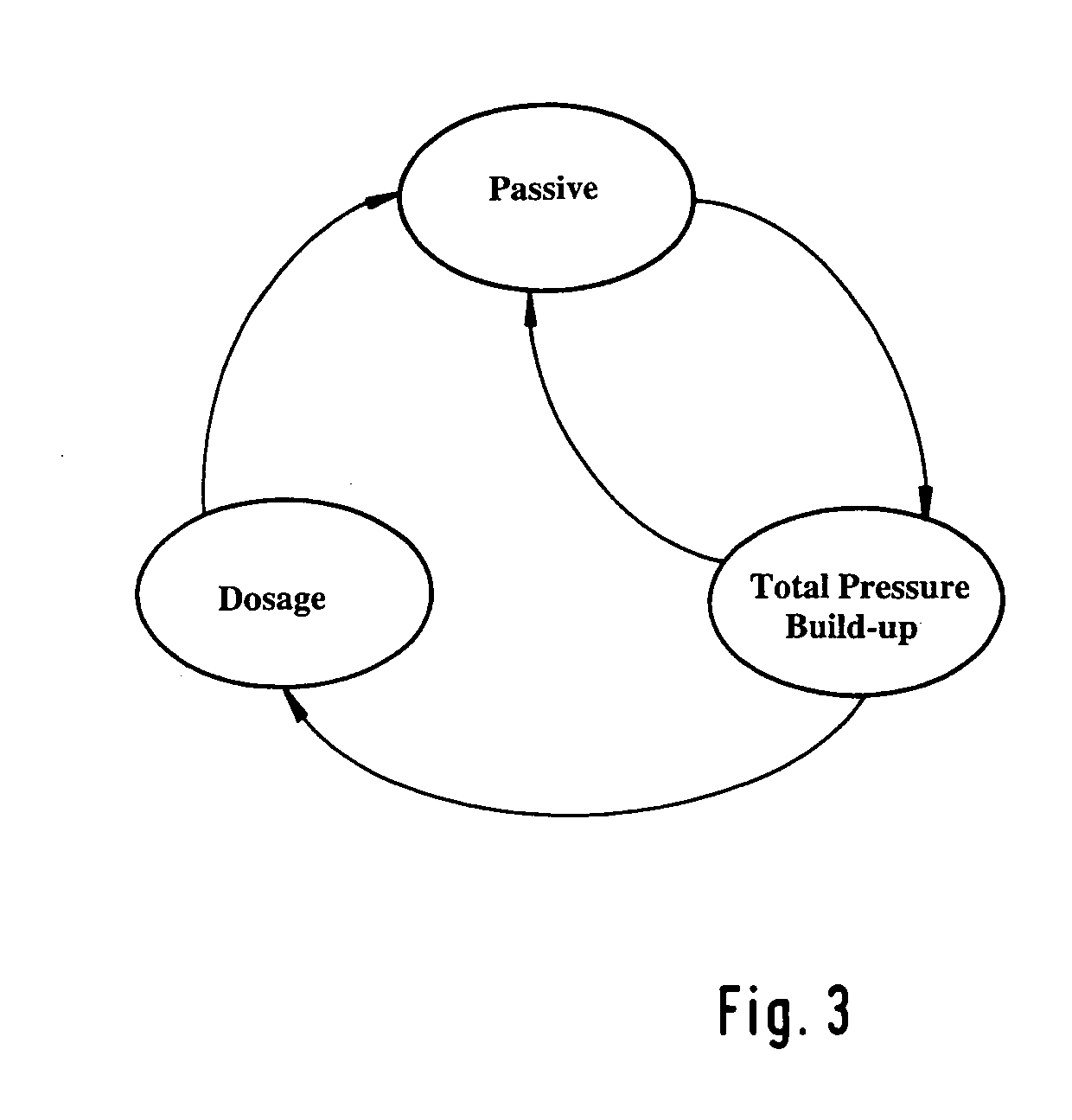Method for operating a power-assist braking system
a technology of brake assistant and brake assistant, which is applied in the direction of brake system, automatic initiation, transportation and packaging, etc., can solve the problems of unnoticeable reducing of brake assistant support for the driver, unsatisfactory and unsafe operation state, etc., and achieves simple and cost-effective realization and the rate at which the excess elevation is reduced
- Summary
- Abstract
- Description
- Claims
- Application Information
AI Technical Summary
Benefits of technology
Problems solved by technology
Method used
Image
Examples
Embodiment Construction
[0020]In FIG. 3, three kinds or modes of operation of the brake assistant system according to the invention are schematically depicted. From FIG. 3 can be obtained the function of the brake assistant system as an automaton of states. The first state or mode of operation “Passive” means that the brake assistant function is not active. As soon as an emergency braking situation is recognized, the system changes over into the second state or mode of operation “Total Pressure Build-up”. In this state, a total pressure build-up is generated by means of a return pump and suitable control of separating and switch-over valves. From the state “Total Pressure Build-up”, a change can be made as well into the state of passivity into the third mode of operation, the dosage mode if the pedal force is significant reduced which can be detected e.g. through the pressure sensor device arranged in the tandem master cylinder. Higher-ranking criteria for the activation of the state “Dosage” out of the st...
PUM
 Login to View More
Login to View More Abstract
Description
Claims
Application Information
 Login to View More
Login to View More - R&D
- Intellectual Property
- Life Sciences
- Materials
- Tech Scout
- Unparalleled Data Quality
- Higher Quality Content
- 60% Fewer Hallucinations
Browse by: Latest US Patents, China's latest patents, Technical Efficacy Thesaurus, Application Domain, Technology Topic, Popular Technical Reports.
© 2025 PatSnap. All rights reserved.Legal|Privacy policy|Modern Slavery Act Transparency Statement|Sitemap|About US| Contact US: help@patsnap.com



